Much of our modern lives are ruled by time – we always have one eye on the clock so we don’t miss that all-important train, meeting or school play, while calendars and diaries chart our lives weeks and months into the future.
Living in today’s electrically lit, climate-controlled civilisation, we’ve become disconnected from the fundamental rhythms of the planet, and the basic reasons behind much that we take for granted.
But imagine just for a moment that you woke up tomorrow totally alone on a deserted world.
How could you determine basic things like the time of day, the date in the year, or even the year itself?
How many of the fundamentals that we take for granted today would you know how to work out for yourself, using only the basic principles of science and simple observations of the heavens?

How to tell the time using the Sun
The most straightforward way of telling the local time is through an age-honoured method: plant a stick upright in the ground and the rotation of its shadow will indicate the passing of the day.
This is the essence of a sundial.
The time when the shadow is shortest (and points due north in the northern hemisphere) is midday, or noon.
For best results, the stick should be angled directly towards the north celestial pole, which is currently located near the star Polaris, the North Star, in Ursa Minor.
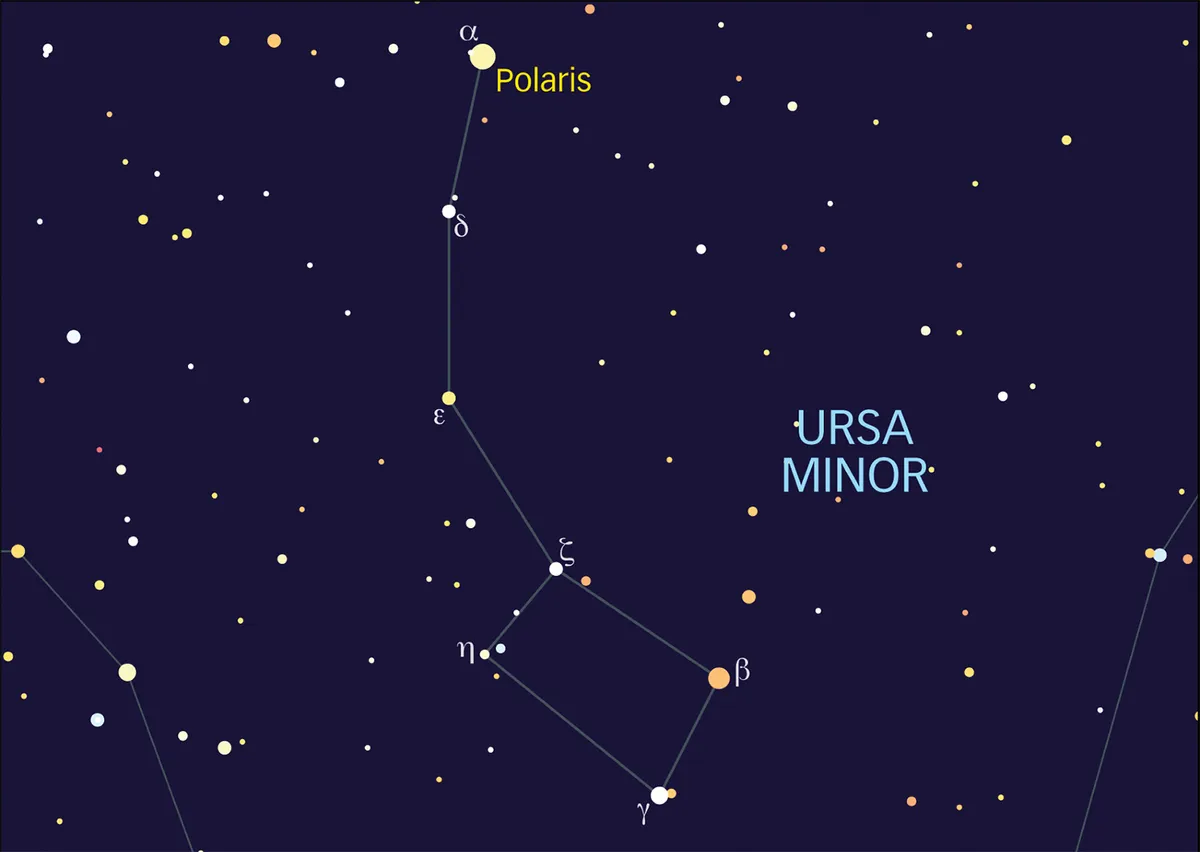
How to divide time into days
You can divide the day into as many segments as you like.
Our convention of breaking down a full day into halves of 12 hours originates with the Babylonians and may be linked to the 12 traditional signs of the zodiac: the band of constellations that the Sun and planets appear to move through in their passage across the sky, excluding Ophiuchus.
In fact, this may be reason that the hands on all modern clocks turn ‘clockwise’.
When European machinists invented the clock, they made the hands move in the same direction the sundial shadow moves during the day in the northern hemisphere.
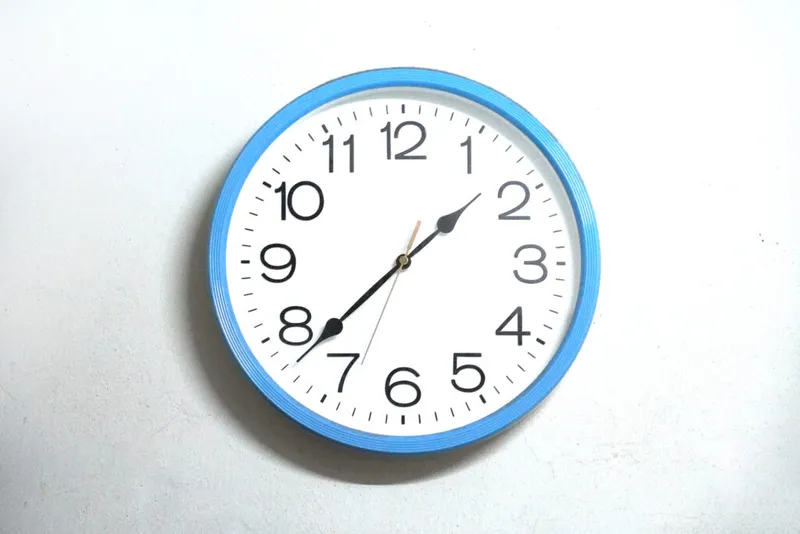
If you divide the time between sunrise and sunset evenly, the length of solar hours indicated by a sundial varies throughout the year: a winter hour is shorter than a summer hour.
Only on two days of the year are the solar hours all equal, the equinoxes in March and September.
It’s this standard equinoctial hour, which can be measured from a sundial using a sand timer, that mechanical clocks are set to count.
But when mechanical clocks became common in our history, this created a potential source of confusion.
When someone sets a time to meet, which of the two time systems do they mean: the uniform hour of machinery or solar time counting the number of hours since sunrise?
This is the reason that since the 14th Century we have specified time as ‘three o’clock’ – the hour of the clock.
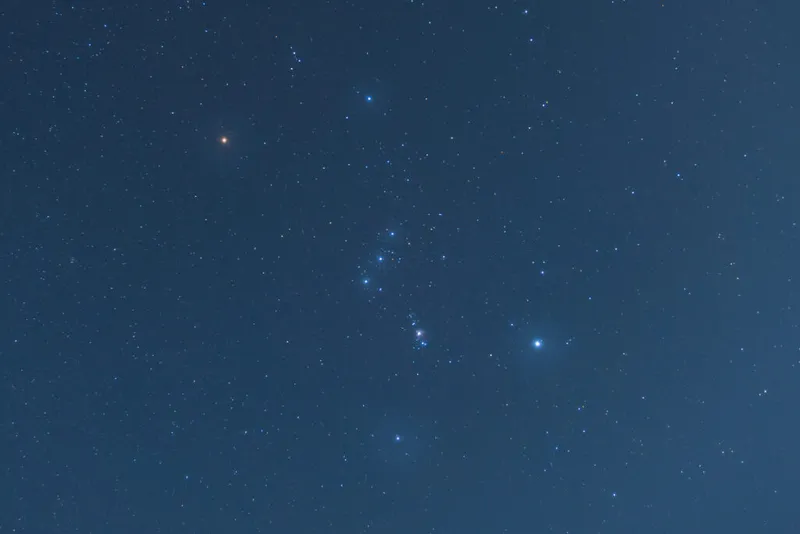
Marking the calendar by observing the sky
As Earth moves along its orbit over the course of a year, particular stars lying near the horizon from a given viewpoint first become visible at night (and then become obscured again) on specific dates.
By counting days between these stellar events, you can determine that there are 365 full days in the year and track your progress through the seasons.
It's also possible to measure the speed of Earth's rotation by observing the night sky.
The ancient Egyptians predicted the flooding of the Nile and rejuvenation of their soil by the first appearance of Sirius in Canis Major, brightest star in the sky, which in our modern calendar equates to around 28 June.
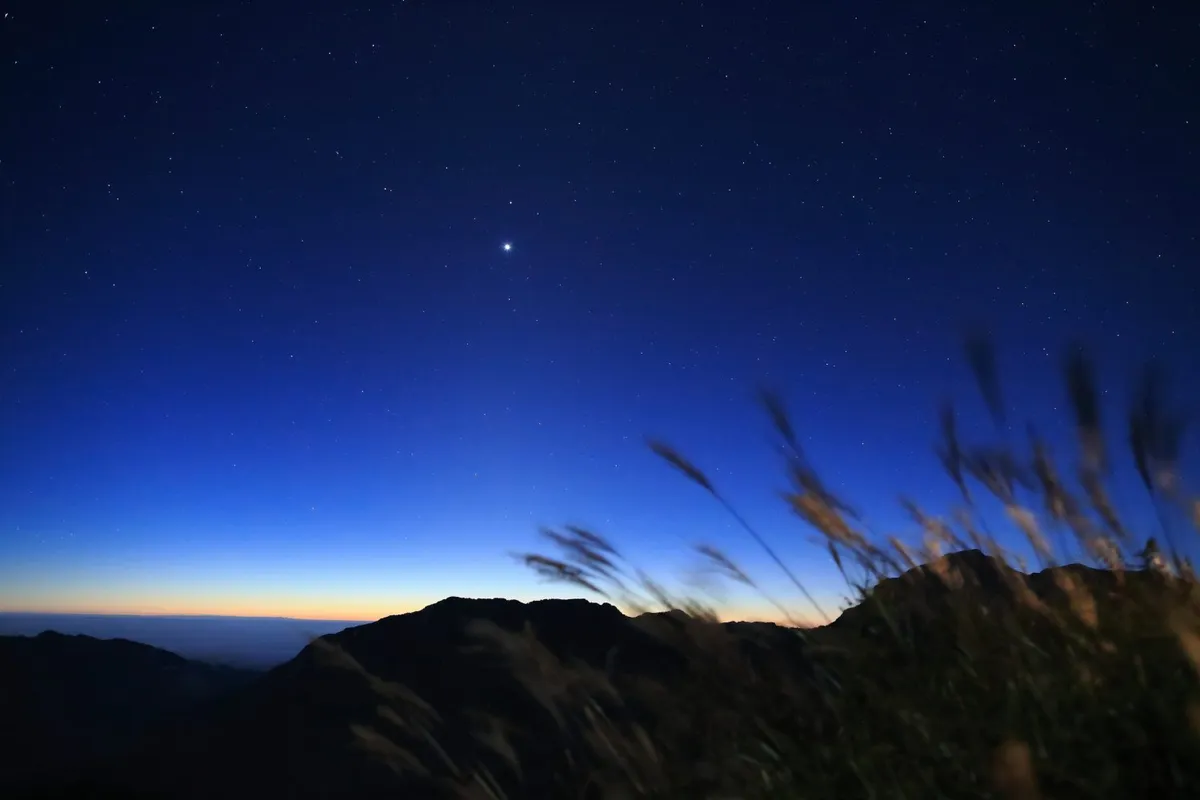
By paying attention to the tracks of the Sun through the daytime sky you’ll also notice several special days.
The day that the Sun reaches highest in the sky, and then six months later skims lowest over the horizon, are the summer and winter solstices – the longest and shortest days respectively.
You can measure the angle of the Sun, or other stars, above the horizon very accurately using a backstaff or sextant (see ‘How to tell the time using the Sun’ below).
In between the solstices, the Sun will rise from due east (at right angles to the north celestial pole) on the morning of the autumn and spring equinox.
These temporal monuments can be used to fix the date: the solstices occur near 21 December and 21 June and the equinoxes fall around 22 September and 20 March.
So if you wanted to, you could reconstruct the Gregorian calendar with its comfortably familiar structure of 12 months from January to December, and peg it back on to the special days you’ve determined from your observations.
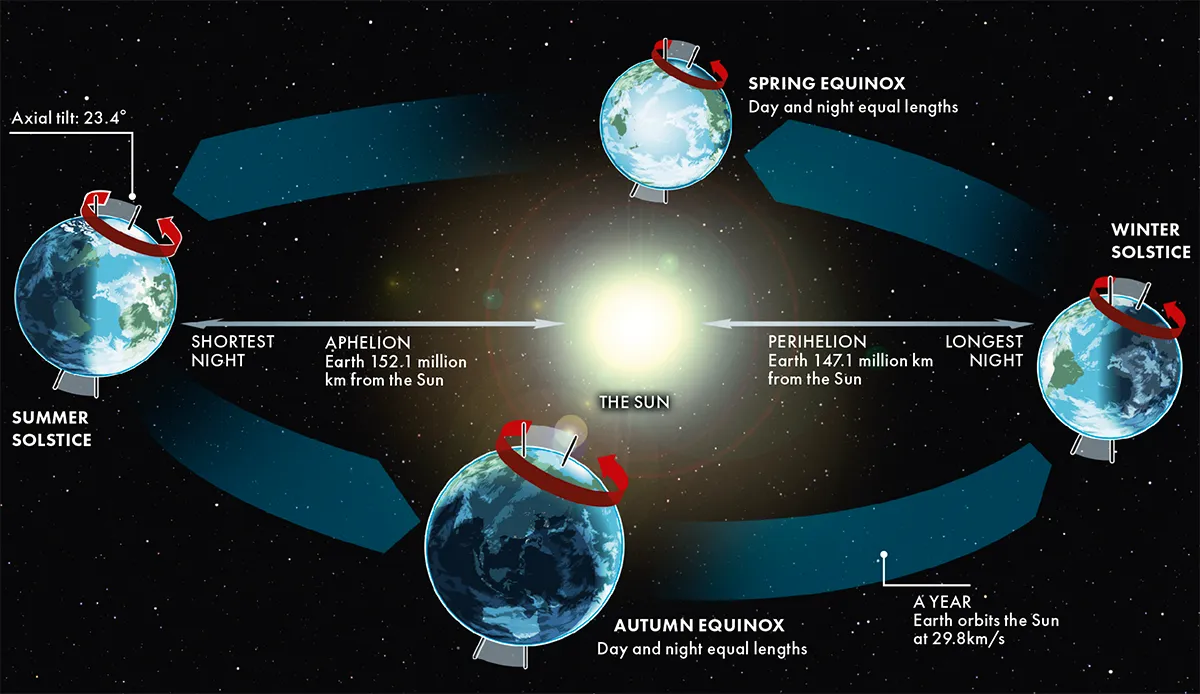
How to tell what year it is
The final part of our thought experiment is farther reaching. If you fell through a time warp into the future, how could you tell from the stars what year it was?
To us, the stars seem locked into position, wheeling around the firmament in fixed configurations we call the constellations.
But over timescales far longer than human experience, the stars are in fact swirling around the sky like flecks of foam on a dark ocean.
This is called ‘proper motion’, and is due to the other stars each following their own orbital trajectory around the centre of the Milky Way.
The star with the fastest proper motion from our point of view, and therefore the one most useful as a natural time marker, is known as Barnard’s Star.
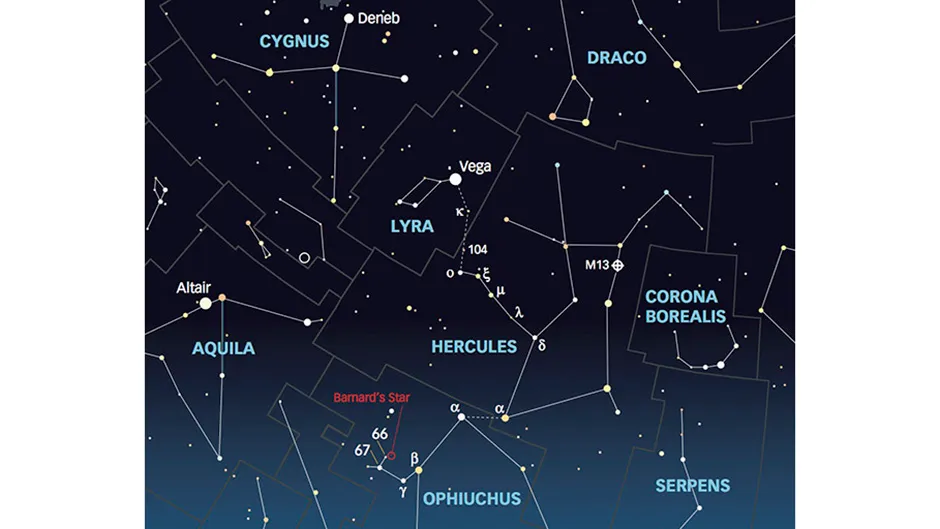
This is a cool red dwarf in Ophiuchus. Despite being one of the closest stars to us it is too dim to be seen with the naked eye, but can be picked out by a modest telescope.
Barnard’s Star tears across the sky at almost 1/3000th of a degree every year.
This may not sound like much, but compared to all the surrounding stars it’s a blistering pace, and over a human lifespan it races almost half the diameter of a full Moon.
So to find the date in the future, all you’d need to do in principle is observe the patch of sky shown in the chart below, note the present location of Barnard’s Star and read off the current year from the timeline.
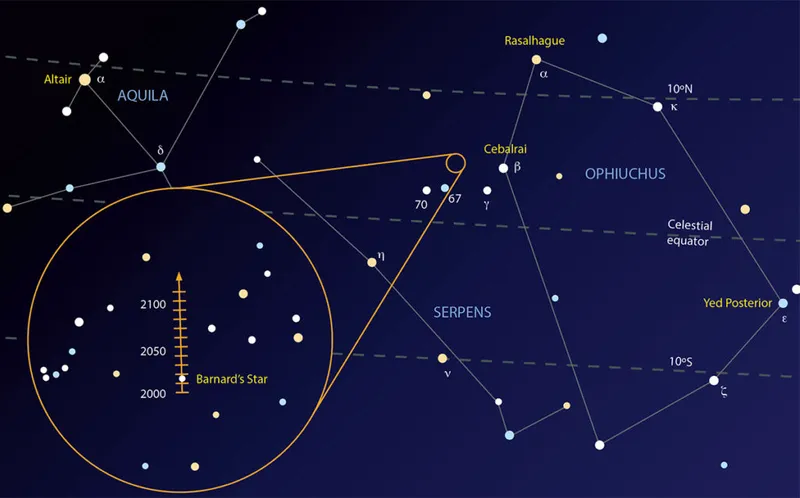
Things get a bit more complicated if you were to end up more than a few centuries into the future.
Earth’s axis of rotation topples round in a circle gradually over time, like a giant spinning top.
This ‘axial precession’ means that while the Polaris happens to sit directly in line with the celestial north pole today, this won’t always be the case.
Within 1,000 years the pole will have wandered through blank sky and passed close to other stars, and by 25,700 AD will have roamed a complete circle to return to its position at the birth of Christ.
You can check where the current north celestial pole lies by observing which point in the sky doesn’t appear to move over the course of the night – the star trails smeared out by a long-exposure photograph will really help here – and compare it the star map timeline shown in the chart below to read off your current millennium.
Or at least, how many multiples of 26,000 years you’ve landed in the future. Or is it the past?

How to tell the time using the Sun
Scientific progression is often driven by the development of new and improved instruments, and this is particularly true in terms of the devices used to measure the angle of Sun and stars above the horizon: crucial for navigating around the globe and telling the local time.
While you can work out some things using the eye alone and fashion a sundial from a stick; for most part you’ll need a tool of some sort.
The wooden backstaff, developed in the late 16th Century, is one simple way of measuring the elevation of the Sun.
It’s also straightforward to make, provided you can find a set of plans.
If you can get hold of some lenses and half-silvered mirrors you could try making your own sextant, still in use today as a back-up marine navigation device in case GPS fails.
However, for observing Barnard’s Star to work out the year, you’d need to find or fashion a small telescope.

Why worry about any of this?!
The thought experiment we’ve explored here may seem frivolous.
As long as modern civilisation doesn’t collapse, you will always be able to find the current time and date.
But while telling the time and ticking off days on the calendar are mindless activities today, they were fundamental capabilities for the progression of civilisation in the first place.
Through history, being able to tell the time yourself has been vital to coordinating the actions of society – the opening of market, for example.
And constructing the calendar to track your progress through the seasons of the year is vital for successful agriculture.
You need to know when is the best moment to sow the seeds so your crop has time to mature before winter draws in and you starve to death.
This article appeared in the May 2015 issue of BBC Sky at Night Magazine.
